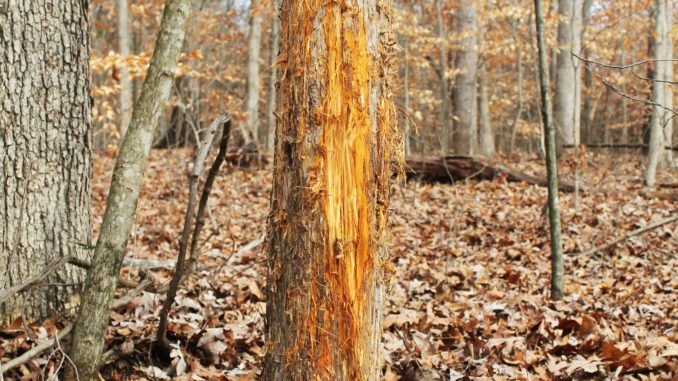
Deciphering why mature bucks rub certain trees in certain areas can get you a leg up on pre-rut hunting success.
Every January, deer hunters begin preparing for the next opening day, with postseason scouting the first task. Most who specifically target big bucks begin looking for rubbed trees that went unnoticed during the fall.
Whatever you call them, they are some of the most important sign for hunters, regardless of your location. All whitetail bucks with antlers will rub trees. They are hard-wired to mark their territory and display dominance. How hunters interpret this sign can make a big difference in their future success.
Looking at rubs can be confusing to many. A single rub in a hardwood bottom can mean nothing or everything; it must be interpreted as part of a bigger picture. While all bucks rub trees, a big difference exists between rubs made by small bucks and mature bucks.
Rubs serve three functions: to leave scent behind to mark territory, to intimidate immature bucks, and as a visual marker. Doe and young bucks can see rubs, and their attention will be drawn to them. How do hunters to distinguish rubs that should be ignored and ones that scream “Hang a stand here!”
David Catoe of Lugoff, S.C., is a big believer of hunting rub lines. He said that his No. 1, go-to tactic for killing big bucks is finding and hunting rub lines. When he finds a rub line while scouting, he tries to unravel it and learn more about the buck.
“I try and find the whole pattern of the buck when I find some rubs,” he said. “I have to find where he is coming from and where he is going.”
Once Catoe finds the buck’s core area, he will sneak in with a climber and hunt that line of rubs.
“I get off of the rub line as far as I can for the location,” he said. “If the area is open enough, I will set up 50 yards or more from the line, but if it is thick, I don’t have a problem getting right there on top of it. Depending on the situation and how thick the area is will depend on how far I set up.
“I don’t pay attention to small rubs at all, even though I know big bucks can rub small trees. But when I find a big rub, like the size of my calf, then I start looking for a pattern.”
Catoe said he forces himself to look only for mature buck sign.
“When I find several big rubs in a fairly small area of less than one hundred yards, I know I am in the best area and will immediately find a good tree to come back and climb,” he said.
Chad Simpson of Hendersonville, N.C., feels the same way about hunting rub lines.
“When I find a line of good rubs, I know without a doubt that a buck is traveling that route,” he said. “It is not difficult to understand that sign. Only bucks make rubs, and only big bucks rub big trees.”
Simpson said the pre-rut is prime time to sit on rub lines,
“During the pre-rut, bucks are very busy making their territory and setting sign posts to other bucks and does, trying to establish their dominance,” he said. “This is the prime time to set up on rub lines. “
Where should hunters look for rub lines?
Dr. Grant Woods, a renowned deer biologist who did much of his research at Clemson University, recorded rub patterns over a 10-year period and noted that the highest density of rubs were recorded within 5 meters of an actual habitat edge. The number of rubs declined the further you moved from the edge. One exception Woods noted was an abandoned logging or skidder trail. These seemed to produce a significant edge effect, even though they had no distinct habitat edge.
What this means for hunters is when scouting for rubs, begin by looking along habitat edges — anywhere two types of habitat come together — which are normally great places to set up deer stands and ambush mature bucks.
Simpson really likes riparian zones along major rivers, and drainages in mature forest.
“These drainages provide everything bucks are looking for: cover, easy travel routes and access to water and food,” Simpson said. “While I don’t always find good sign in every drainage, these are great places to start when looking for rub lines. Other areas to look are where 5- or 6-year-old planted pines meet hardwoods. These thick pines provide great cover for bucks, (which) will walk these edges looking for does and marking territory.
Simpson said if he finds sign in these areas, he is quick to locate a good tree to hang a stand or climb when season opens.
“Since I am primarily a bowhunter, I like to set up close. When I find a good spot, I will often get into the woods an hour or more before daylight and be there before he comes back from his nightly travels. If he doesn’t, I am prepared to sit all day if need be.”
Catoe agrees totally.
“I killed two of my (South Carolina) record-book deer sitting on rub lines in my climber,” he said. “One took two days and the other three days before he finally showed. But I sat from before daylight ’til after dark every day until I killed him.”

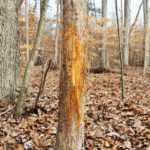
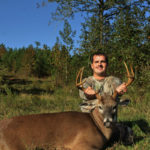
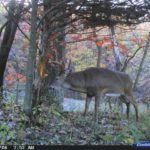


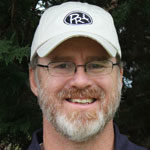
Be the first to comment